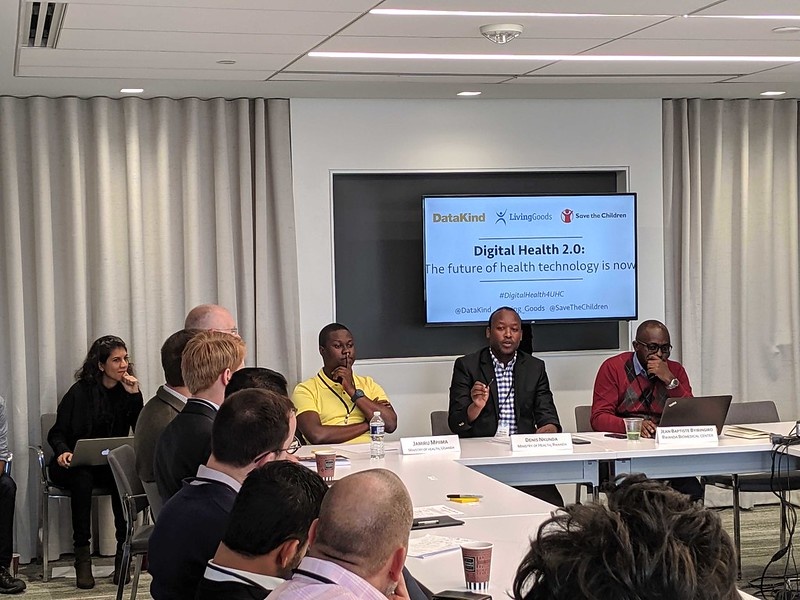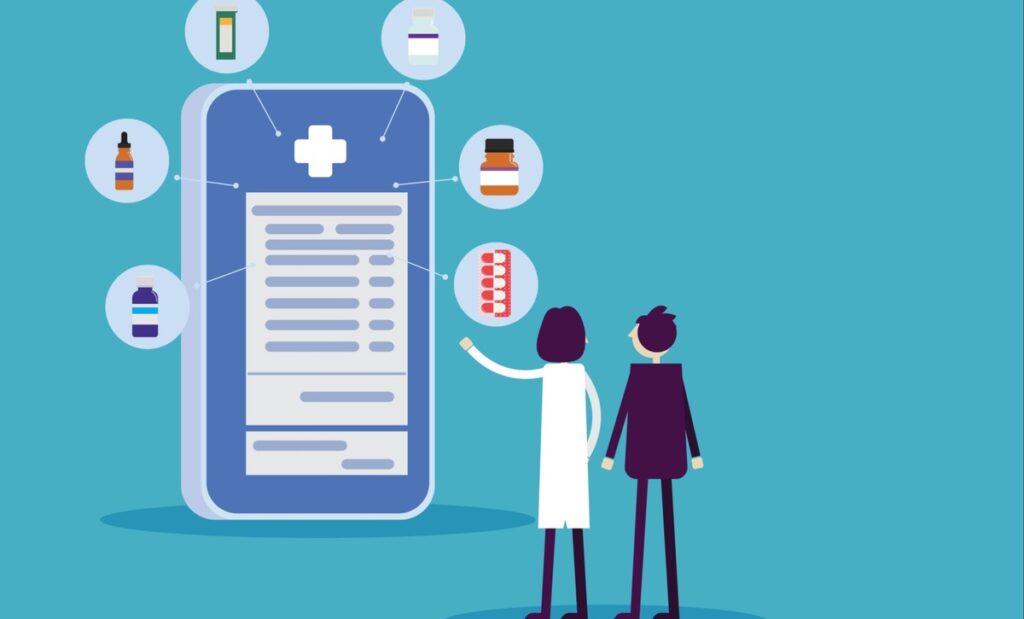lllustration above by iStock/uzenzen
Note: This article originally appeared on the Frontline Health Workers Coalition website. They’ve granted us permission to repost.
By Asif Akram, Living Goods | Caitlin Augustin, DataKind | Jeanne Koepsell, Save the Children
Digital health tools are transforming how primary health care services are delivered around the world, with a recent explosion of innovations poised to help those who remain disconnected from formal health systems. This growth is particularly apparent in the field of community health, as experts and implementers work to find ways to maximize resources to improve health outcomes for communities at the last mile. Community health workers (CHWs) equipped with digital tools are a valuable lifeline between health facilities and communities in need of care. As the only form of organized health care for millions of people in low- and middle-income countries, prepared and equipped CHWs have become even more critical with the spread of COVID-19.
The COVID-19 pandemic has resulted in a greater demand for digital health innovations at the community health level. CHWs can play a pivotal role in pandemic response, including interrupting the virus, maintaining existing health care services, and shielding the most vulnerable. This pandemic has necessitated innovation—from revising existing case management applications to designing and deploying COVID-19 modules for contract tracing—and there has been significant digital transformation. CHWs are utilizing digital tools like Living Goods’ Smart Health app, DiMagi’s CommCare, and Medic Mobile’s Community Health Toolkit to continue delivering essential health services, through remote data collection, SMS, or other communication solutions, since their roles have become anything but routine.
“Digital tools have become even more important to me with COVID,” says Rita Nakakande, a CHW in Uganda supported by Living Goods. “Now I use my smartphone to not only conduct health assessments in-person and at a distance, but also for remote health assessments by calling and texting with families in my communities. It’s important to continue providing treatment for diseases like malaria and diarrhea, and supporting pregnant women. Their health problems don’t stop because of COVID, they still need me.”

Rita Nakakande above, a CHW supported by Living Goods, visits a family in Uganda before the COVID-19 pandemic. Now, Rita delivers care through her smartphone or by following a no-touch protocol for in-person visits at a two meter distance. Photo Credit: Living Goods
The data that CHWs are providing through digital tools is invaluable not just for tracking and intervening against COVID-19, but also to monitor the disruption of services which is a huge concern in managing high-risk pregnancies, providing essential antenatal and postnatal care, and supporting TB patients at risk of discontinuing their treatment. Data being collected includes who is receiving care and the type of care they’re receiving so decision-makers know what services are and aren’t being accessed. Without the continuation of services like the ones Rita is delivering remotely, a recent study published in The Lancet estimates a significant increase in preventable child and maternal deaths.
However, digital health tools aren’t a silver bullet, either for fighting COVID or ensuring the long-term delivery of health services to underserved communities. Challenges still exist.
At the end of last year, our three organizations (DataKind, Living Goods, and Save the Children) brought together decision-makers, thought leaders, implementers, and technocrats within the field of community health to discuss these challenges and the way forward. The summit aimed to identify both existing and new sources of field worker data, and discuss how data can be mobilized and utilized in more impactful ways. Additionally, a main goal of the summit was to foster buy-in across all stakeholders supporting community health systems to adopt and implement new digital analytics guidelines to meet the health needs of their populations.

Digital Health 2.0: The Future of Health Technology is Now in Washington, DC, co-hosted by DataKind, Living Goods, and Save the Children. Photo Credit: DataKind
Through several intense hours of conversations, key issues emerged. While these issues parallel statements and conversations in many working groups, they’re noteworthy for the diversity of attendees and the geographies they represented. Participants identified the major roadblocks to scaling digital solutions as:
- A lack of interoperability between reporting systems and an abundance of siloed technology solutions within the health system.
- Challenges in data confidence and building a workforce with appropriate skills to utilize and interpret data collected.
- A knowledge and collaboration gap still exists between those creating digital health technologies and those adopting, implementing, and utilizing these tools.

Digital Health 2.0: The Future of Health Technology is Now in Washington, DC, co-hosted by DataKind, Living Goods, and Save the Children. Photo Credit: DataKind
Now more than ever, we need to overcome these challenges by increasing investments in research and development, commitments to adopt proven digital tools that can be efficiently scaled to reach the millions without care, and safeguards to protect personal and private health data. And we need to continue this conversation.
USAID recently released a Digital Strategy and the World Health Organization will be releasing new Digital Health Recommendations in the coming months. As technologists, policymakers, advocates, and frontline teams, we must all work together to ensure that these recommendations, and Digital Health 2.0, prioritize digital health innovations at the community health level to meet the health needs of those most often left behind.
Read the report out from the Digital Health 2.0 Summit held in Washington, DC on December 12, 2019 here.
Asif Akram, PhD, is the Chief Technology Officer at Living Goods. Living Goods saves lives at scale by supporting digitally empowered community health workers who deliver care on call–making it easy for families in need to get the care they need.
Caitlin Augustin, PhD, is the Senior Director, Product, at DataKind, a global nonprofit that harnesses the power of data science and AI in the service of humanity. DataKind helps mission-driven organizations unlock their data science and AI potential ethically and responsibly.
Jeanne Koepsell, MS, is the CCM Advisor and Innovations and Digital Health Lead at Save the Children, which does whatever it takes — every day and in times of crisis — to ensure 134 million children in 120 countries grow up healthy, learning and safe.




